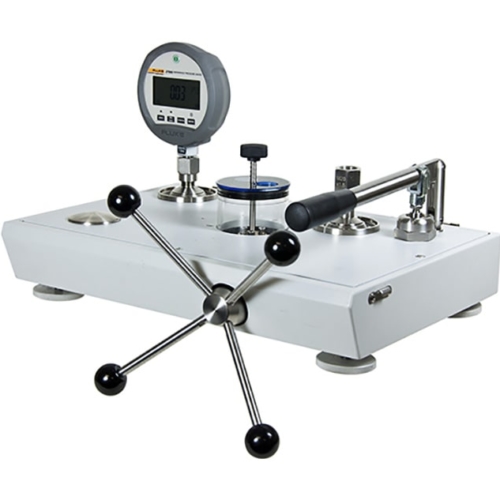
Garber Metrology offers a full range of pressure and vacuum calibration services to ensure your gauges perform well in industrial, medical, and scientific applications. Calibration is a process whereby technicians compare measurements taken from gauges in your facility against those from factory-standard gauges with known accuracy.
Routine calibration ensures that your gauges are up to standard and within allowable tolerances. Regularly calibrating your equipment also results in improved workplace and employee safety along with better machine performance.
At Garber Metrology, all our services are:
Adhering to these standards results in reliable systems and safe employees. In addition, we issue a Certificate of Calibration at the end of each completed job, and all certificates are traceable to the NIST. Our pressure calibration lab is ready to handle all your gauges and similar vacuum calibration equipment today — reach out to learn more about our services whenever you’re ready.
Pressure gauges appear in factories, laboratories, and the field. Their high prevalence makes it easy to delay or overlook needed repairs, which can lead to equipment failure.
Several factors can cause a pressure gauge to fail, including:
While some of these factors are endemic to a given application, others can be mitigated or corrected by trained technicians. If you work with pressure gauges in any capacity, you should test and recalibrate them regularly to ensure maximum accuracy with every measurement.
At Garber, we can calibrate equipment that handles up to 20,000 psi, with our standard equipment having accuracy of up to 0.008%. We offer calibration services both on-site and in-house in our calibration lab, and we offer regional pickup and delivery for in-house projects. We perform most jobs within five working days from the time we receive your gauge.
Although determining a proper calibration test schedule depends on many factors, most gages require more maintenance as frequency and intensity of use rise.
How do you know when to have your pressure gage calibrated? These steps may be helpful in deciding whether it’s time to schedule a calibration test:
If your company takes critical measurements, you must schedule time for calibration of your pressure gages. Your business owns this equipment to take precise measurements of your products. Without reliable results, you risk sending out goods that fall short of customer expectations. Recalling and remaking those items increases production costs and impacts your brand’s reputation.
Garber Metrology is an expert in calibration, and our team can test pressure gages for clients in various fields. We’ve carried out calibration tests in many industries, including:

Calibration involves computerized tools, which we verify are working properly before beginning calibration. These pressure modules can set a specific amount of pressure, and we test your gage using that standard to ensure its readings are correct.
During vacuum calibration, our certified technicians set a known standard to the tested pressure points and take readings from your gage. We look for deviations between the standard and your gage’s measurements to determine where any issues are occurring.
For many instruments, we test five points within the gage’s capacity, which are separated by 20% of the total capacity.
When we perform high-accuracy calibrations, we inspect 10 points that represent every 10% of the total capacity.
During vacuum calibration, our technicians may determine your pressure gage is out of tolerance. This issue can happen for various reasons, and some problems are repairable. Depending on your gage and the problem causing inaccurate measurements, replacement may be a more suitable option.
Testing various points of your gage lets us pinpoint where inaccurate readings stem from. Our findings can help your company discern the problem.
A pressure gage calibration can help you determine the cause of the problem, you can decide whether repair or replacement is a more fitting option.
At Garber, we perform vacuum calibration services for gauges as low as 25 inHg. As with our pressure calibration services, we provide vacuum calibration both on-site and at our facility.
During vacuum calibration, we use digital pressure calibrators that are used to compare with the customer’s gauge. We set a known standard for each pressure point and then inspect and compare each pressure point with the test gauge’s readings. This process identifies any deviations from the standard, allowing us to pinpoint where in the system the error occurred.
Each instrument typically receives a four-point vacuum calibration. We also perform more precise 10-point calibrations if requested.
Our team frequently works with the best manufacturers in a range of industries, including food processing, brewing, oil processing and scientific testing. We’re experienced in measuring these tools using our pressure and vacuum calibration services:
Since 1975, our experts have refined our vacuum and pressure calibration services to deliver precise, actionable results. Whether we’re testing your gauges on-site or in our specialized pressure calibration lab, we take care to measure your equipment against our meticulous tools and adjust it until it delivers the most accurate results possible.
At Garber Metrology, we offer complete pressure and vacuum inspection and calibration services for businesses across the Mid-Atlantic region and beyond. Working with us will give you peace of mind knowing your employees and your facilities remain compliant. If you would like to learn more about our pressure and vacuum calibration services, contact us today.